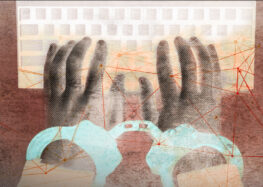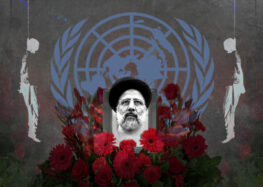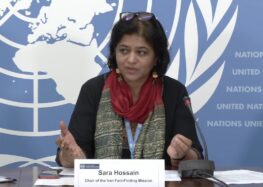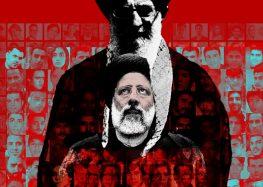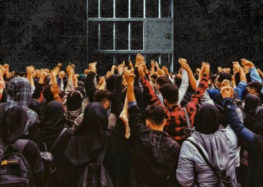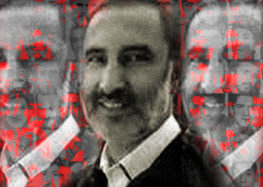Videos Appear Defending Iranian Presidential Hopeful’s Role in 1988 Prisoner Massacre
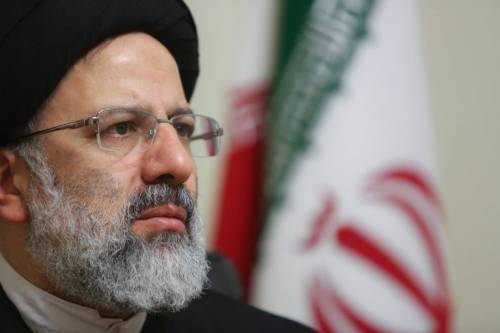
Since Ebrahim Raisi announced his candidacy for Iran’s presidency, videos have been appearing online defending the 1988 massacre of thousands of political prisoners, which Raisi implemented as part of a special committee.
The videos were recently published without clear indications of who or what organization produced them. However, some have been posted by Raisi’s official campaign page on the Telegram messaging application, which is widely used in Iran.
The head of Iran’s wealthy Astan Quds Razavi religious and business conglomerate, Raisi is current President Hassan Rouhani’s main rival for the country’s elections on May 19.
In 1988, as the deputy prosecutor of Tehran, Raisi was appointed by the founder of the Islamic Republic, the late Ruhollah Khomeini, to the “Death Committee,” which implemented the executions of thousands of political prisoners who had already been tried and sentenced.
As a result of Raisi’s bid, the extrajudicial executions of 1988 have for the first time become an issue during a presidential election in Iran. Civil rights activists and human rights groups have been publicly criticizing him for his role in the massacre.
In response, Raisi’s official campaign page on Telegram, Raisi Amad (Raisi has Arrived), posted a three-minute video titled “Wolves” on April 11 justifying the executions.
The video claimed the victims were executed because they were all members of the outlawed opposition group, the Mojahedin-e Khalgh (MEK), which launched armed attacks against Iran in the 1980s.
According to historical and personal accounts, the prisoners were executed based on their answers to questions about their political and religious beliefs during one meeting with the committee that was assigned to them.
The prisoners, who had previously been tried and sentenced, did not have access to a lawyer or any form of due process during the inquisition-like proceedings. Nor were they informed that they were facing death when they faced the committee.
“This (video) is an effort by Raisi’s fans to whitewash his role by saying his massacre of political prisoners was a natural and legitimate reaction,” tweeted journalist Behrooz Samadbeygi on April 26, 2017. “How will Rouhani’s supporters respond?”
Raisi has a history of advocating for the death penalty against dissidents.
When Arash Rahmanipour and Mohammad Reza Ali Zamani, members of Tondar, an outlawed pro-monarchist group, were executed in January 2010, Raisi, then the first assistant to the Judiciary chief, supported the action.
“These two who were executed (Rahmanipour and Zamani) and the nine others who will be executed soon once their crimes have been proven, were arrested during recent disturbances (following the disputed 2009 presidential election),” said Raisi on February 2, 2010, according to the hardline Fars News Agency.
“They were connected to anti-revolutionaries who intended to create discord and overthrow the state,” he added.
While publicly criticizing the 1988 massacre is a taboo topic in Iran, some people have publicly spoken out against Raisi’s role.
“Today’s Iran is not the same as the Tehran prosecutor’s office in the summer of 1988,” said a student from Yazd University at an on-campus event in late April.

